
TECHNICAL ARTICLE
TECHNICAL ARTICLE
The global market for plant-based frozen desserts is booming, but replicating the mouthfeel, texture and creaminess of dairy-based products can be a challenging process. Marilyn Tan and Li Ying Chua, Palsgaard Asia Pacific’s Application Technologists for Ice Cream & Dairy, have invested time and energy into creating inspirational recipe suggestions for dairy-free frozen desserts using different plant-based protein sources. Here, they share their knowledge.
"Through the studies we did, we can advise our customers better on how they should prepare the product, such as whether hydration of the protein is required or not. We can also alert them to the challenges they might face and how to solve them. We can do this because we experienced these issues first-hand while working with various plant-based proteins."
– Li Ying Chua, Application Technologist, Palsgaard Asia-Pacific
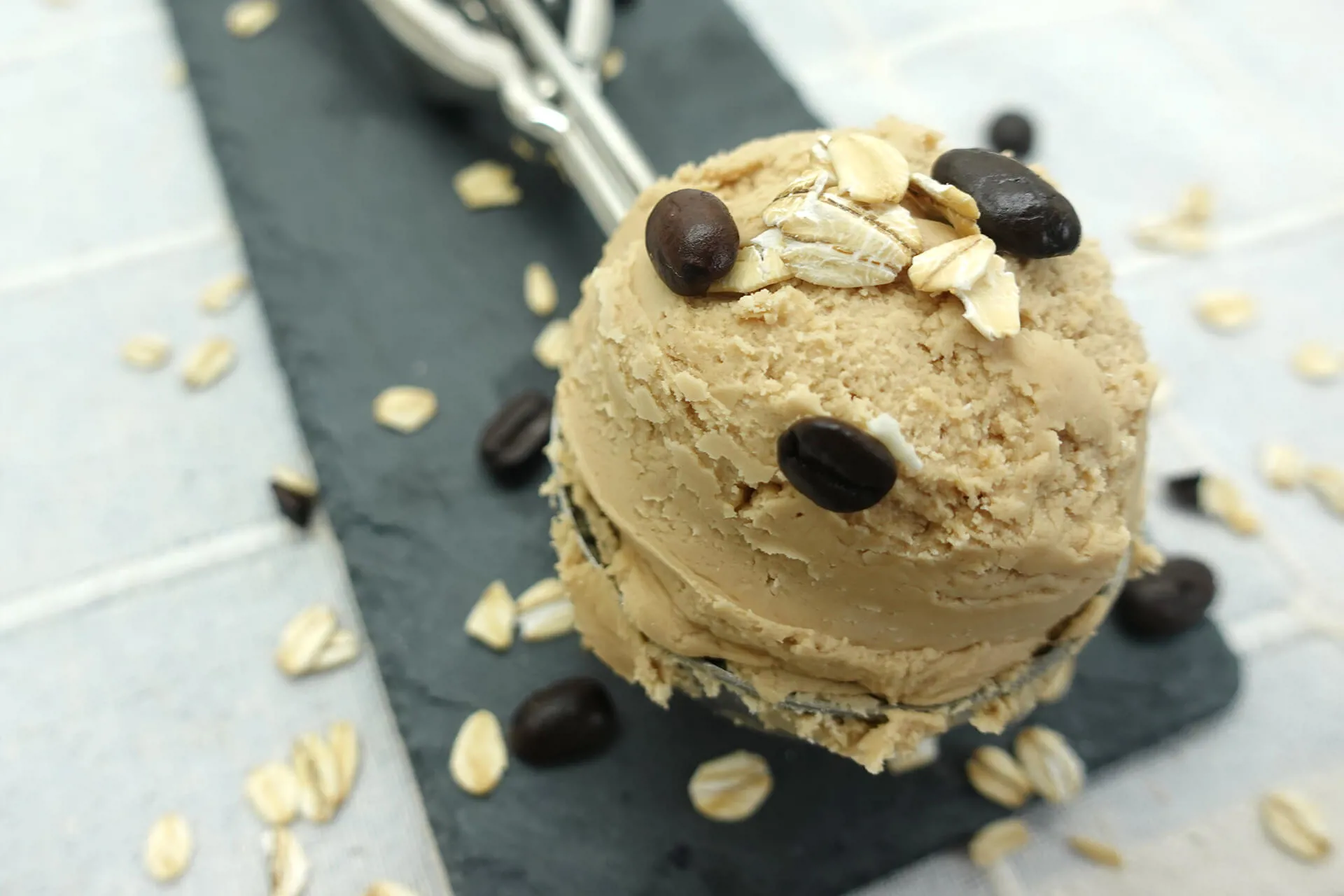
Dairy-free ice cream is no longer a niche market and with the ongoing popularity of plant-based diets in general it’s clear there are opportunities for more new product development.
“Plant-based frozen desserts have become very popular in the market now and a lot of the bigger producers - such as the makers of Ben & Jerry’s and Magnum - have launched into this space. It helped drive awareness of this market,” says Li Ying.
Marilyn confirms that this is a trend that is here to stay: “It’s a lifestyle that a growing number of consumers are choosing to adapt. A lot of people are going vegan because of the environment. They want to reduce their carbon footprint and they want to see a reduction in our consumption of animal protein. There’s more global awareness about plant-based diet, especially among younger generations.”
So, the plant-based movement looks set to continue and consumers want to add indulgent plant-based frozen desserts to their shopping lists. But how easy are they to produce?
“It is very challenging, and it is very different from producing dairy ice cream,” says Li Ying. “Certain plant proteins could contribute to high mix viscosity resulting in production difficulties”.
Marilyn adds: “However, Palsgaard’s emulsifiers still work in the same way as they do in dairy ice creams so we can help manufacturers to get the right texture. Another good thing is that Palsgaard’s emulsifiers are based on vegetable oils, so it’s already plant-based and therefore ideal for plant-based products.”
Manufacturers of dairy-free frozen desserts often find it difficult to replicate the mouthfeel and texture of standard ice cream, and this is where Palsgaard can step in.
“We have a product, Palsgaard® ExtruIce 379, which is an integrated blend of stabilisers and emulsifiers, and it’s perfect for frozen desserts,” explains Li Ying.
“Palsgaard® ExtruIce 379 provides very stable emulsions for the whole system, so it prevents ice crystal formation and it also helps to give a creamier mouthfeel to the frozen dessert as well. Another benefit is that it can improve the heat-shock stability.”
Li Ying and Marilyn have spent the last few months experimenting with different plant-based frozen dessert recipes.
“Through the studies we did, we can advise our customers better on how they should prepare the product, such as whether hydration of the protein is required or not,” explains Li Ying. “We can also alert them to the challenges they might face and how to solve them. We can do this because we experienced these issues first-hand while working with various plant-based proteins.
“The recipe creation process also enabled us to try out our own Palsgaard emulsifier blends and we are now in a better position to give advice to our customers.”
They now have four prototype recipes, which show how adaptable and valuable Palsgaard® ExtruIce 379 is in enhancing texture, mouthfeel, stability and other sensory properties.
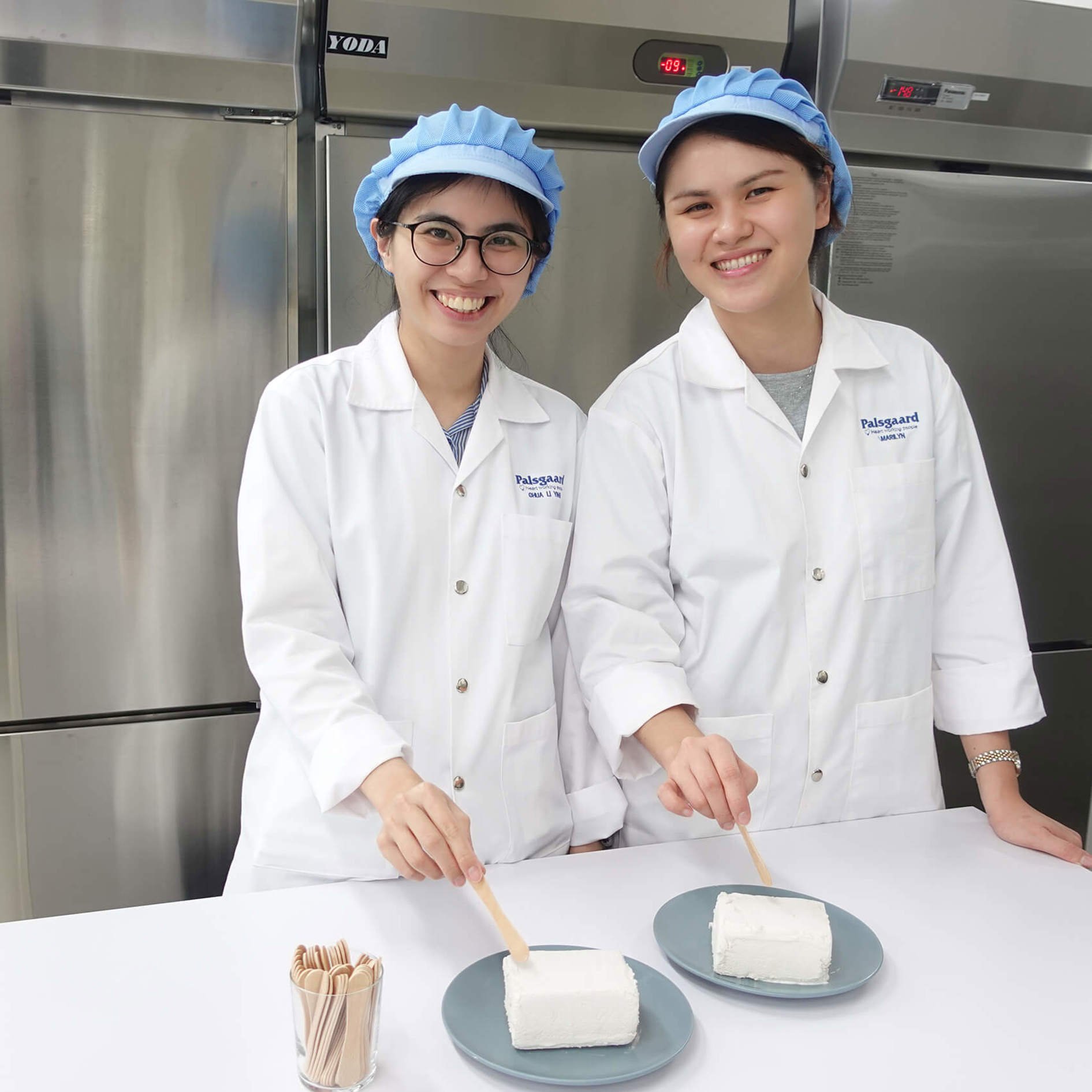
The fava bean – or broad bean - is a widely available plant-based source of protein but it’s not one many consumers will be familiar with as an ingredient in a frozen dessert.
Marilyn explains why it was chosen as a base for one of the recipes.
“We were trying to study the properties of different plant-based proteins. We did various studies with the fava bean and it came up very neutral in taste, which we saw as a benefit for frozen dessert recipes.
“We wanted to work with ingredients which offered a wide range of different viscosity and the fava bean was actually the highest level that we worked with.
“We wanted to make sure our emulsifier and stabiliser blend was strong enough and functional enough to ensure there is no separation in the frozen dessert mix and during the churning with a high viscosity protein base.”
The duo created two fava bean options, one oat-based and one water-based.
“The oat-based one is creamier because of the oat, but the use of oat also contributes to the viscosity,” Li Ying explains. “We used two different bases to demonstrate that there will be a difference in the mouthfeel depending on whether you use water or oat as a base, but it gives the manufacturer a choice. The water-based option can be easier for processing because not all manufacturers will have the pump that is capable of such a high viscosity mix.”

Oats are commonly used as a protein base for dairy-free milk alternatives and desserts, in part because they are widely available globally but also because consumers are aware of their health benefits. In frozen desserts, oats also do a good job of replicating the creaminess of dairy.
“This recipe was more straightforward because we used hydrolysed oat protein, which has a lower viscosity,” explains Marilyn.
“We added instant coffee to this recipe, and we wanted to see if it would lower the pH of the product but in this case, it didn’t affect the texture and flavour unfavourably.”
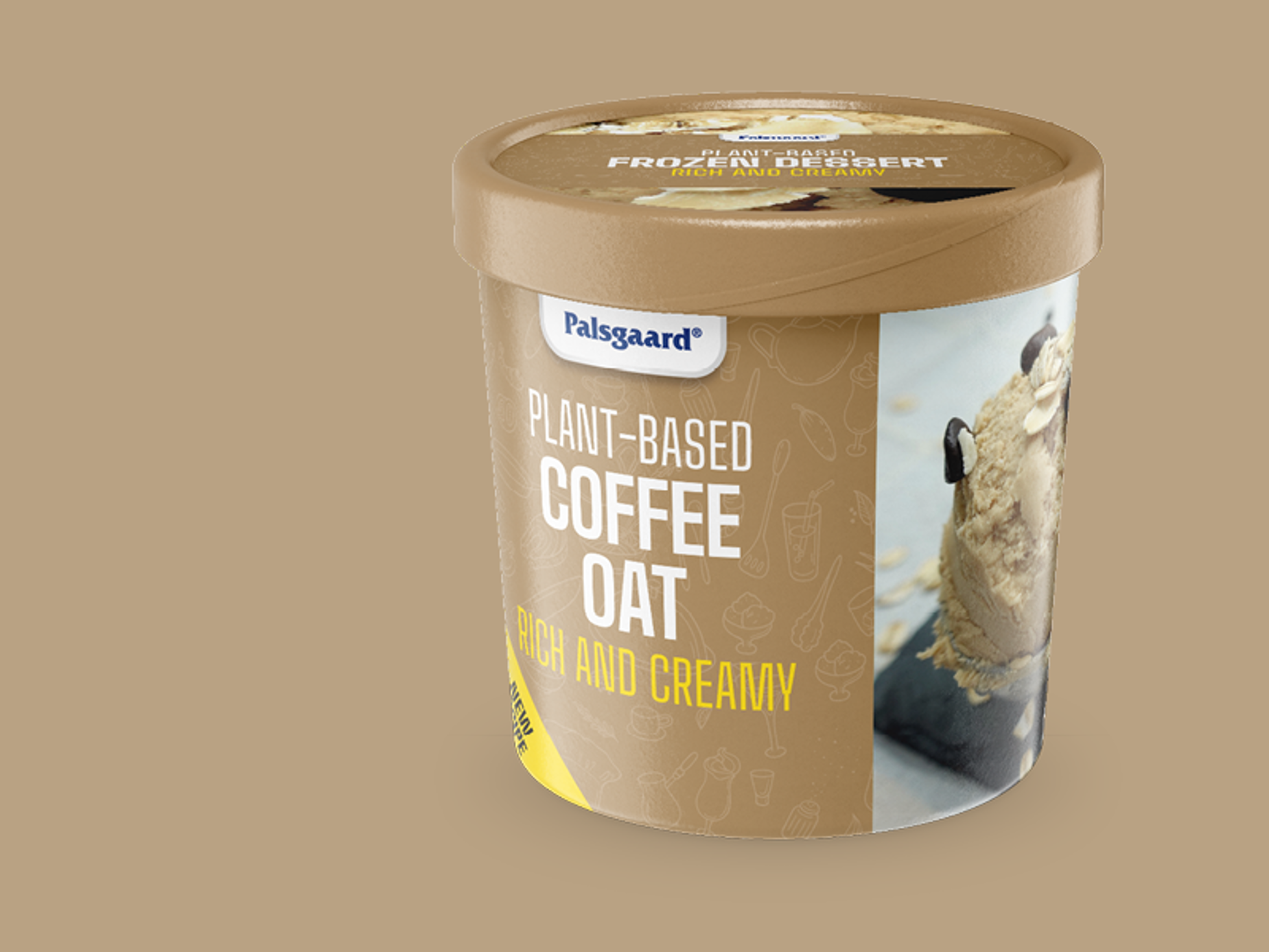
Nuts are one of the most widely used plant-based protein sources in dairy-free products, so almond was chosen as a base for the third concept.
“We used it here with an oat base and it worked well,” says Li Ying. “Almond has a fairly mild flavour and it’s a taste that is favourable to many consumers as well.
“We added inulin, as a bulking agent to the plant-based frozen dessert to increase the solid content and at the same time improve the overall texture and achieving a creamy mouthfeel on the final product.“

However, it’s not just about the popular flavours of the moment.
Li Ying and Marilyn wanted to demonstrate that lesser-known protein sources can also be used to create frozen desserts and for manufacturers who want to experiment with new concepts, Palsgaard’s emulsifier and stabiliser blends can help boost new product development.
“We’ve been working with sesame paste for other products so we thought we would try it out here in a frozen dessert and it turned out well,” confirms Marilyn.
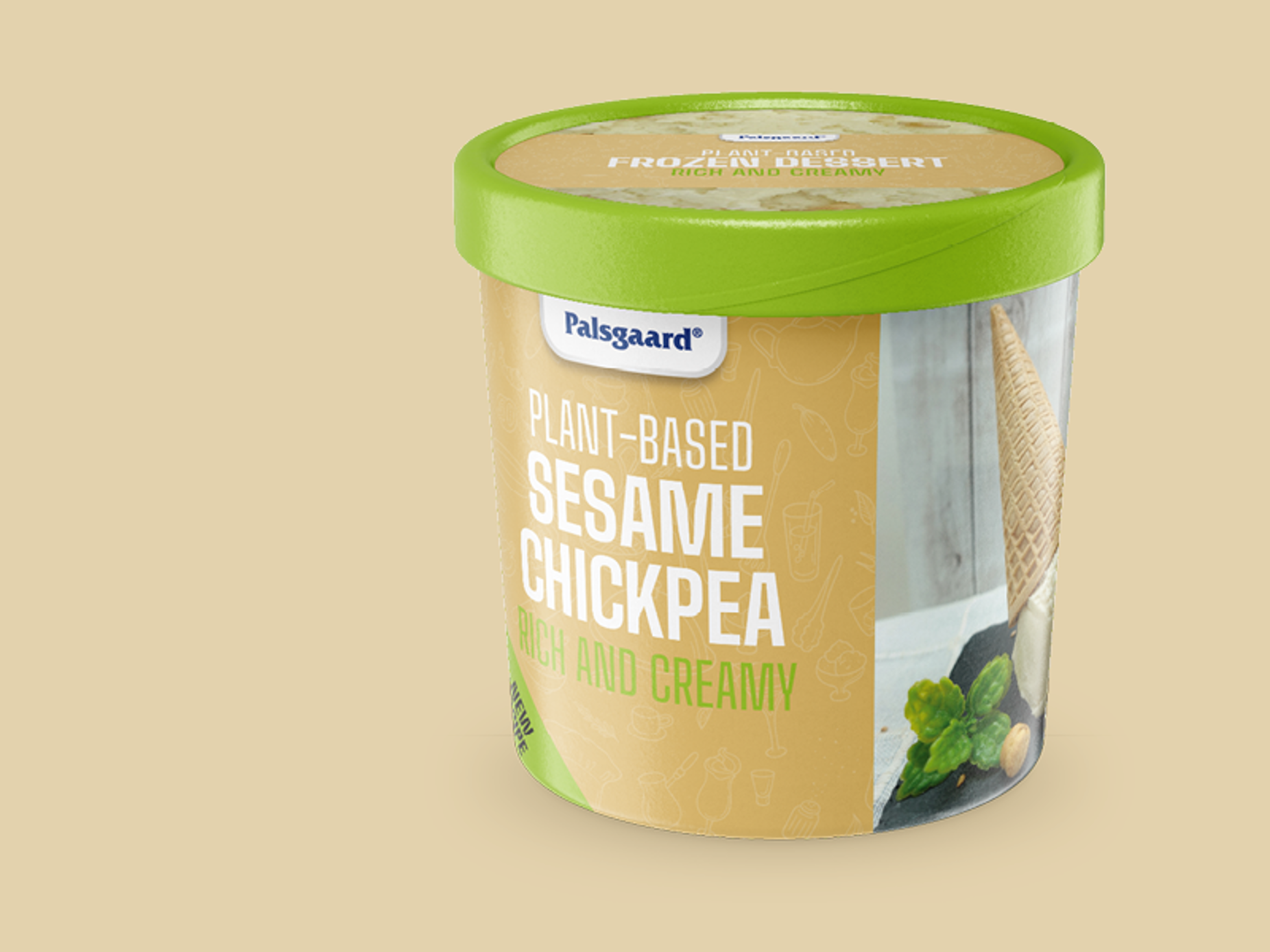
There are a lot of things to take into consideration when developing a plant-based frozen dessert, so where’s the best place to start?
“I would say the most important thing, first of all, is to identify the plant protein that you want to use, as every plant-base has different texture and functionality. Depending on the choice of plant-based protein, the ingredients in the recipe should be adjusted accordingly,” says Li Ying.
Marilyn agrees, noting the importance of understanding that a plant-based recipe won’t be the same as a dairy recipe, “so manufacturers need to think about what qualities they want to replicate”.
She says: “As these recipes demonstrate, Palsgaard® ExtruIce 379 can contribute to a different mouthfeel so if you have a dessert which is very high viscosity, we can help solve this. Palsgaard has a wide range of emulsifier and stabiliser blends that can address different requirements of manufacturers like better melt-down resistance, excellent heat-shock stability, and rich and creamy mouthfeel to name a few.”
The ingredients used to make plant-based frozen desserts are wide-ranging and as such, the finished products can vary significantly when it comes to sustainability. “It often depends on the different protein bases of the plant,” explains Li Ying. “Almonds might have a higher carbon footprint compared to other nuts, for example, so it’s difficult for the finished product to be entirely sustainable.”
However, manufacturers can be confident that Palsgaard® ExtruIce 379, like all of Palsgaard’s ingredients, will meet the needs of eco-conscious consumers.
Marilyn says: “Every product we produce is made with a strategic focus on reducing our energy consumption and our CO2-emissions. That is definitely a plus-point for manufacturers who want to promote the sustainability of the ingredients and the product.”

TECHNICAL ARTICLE

TECHNICAL ARTICLE
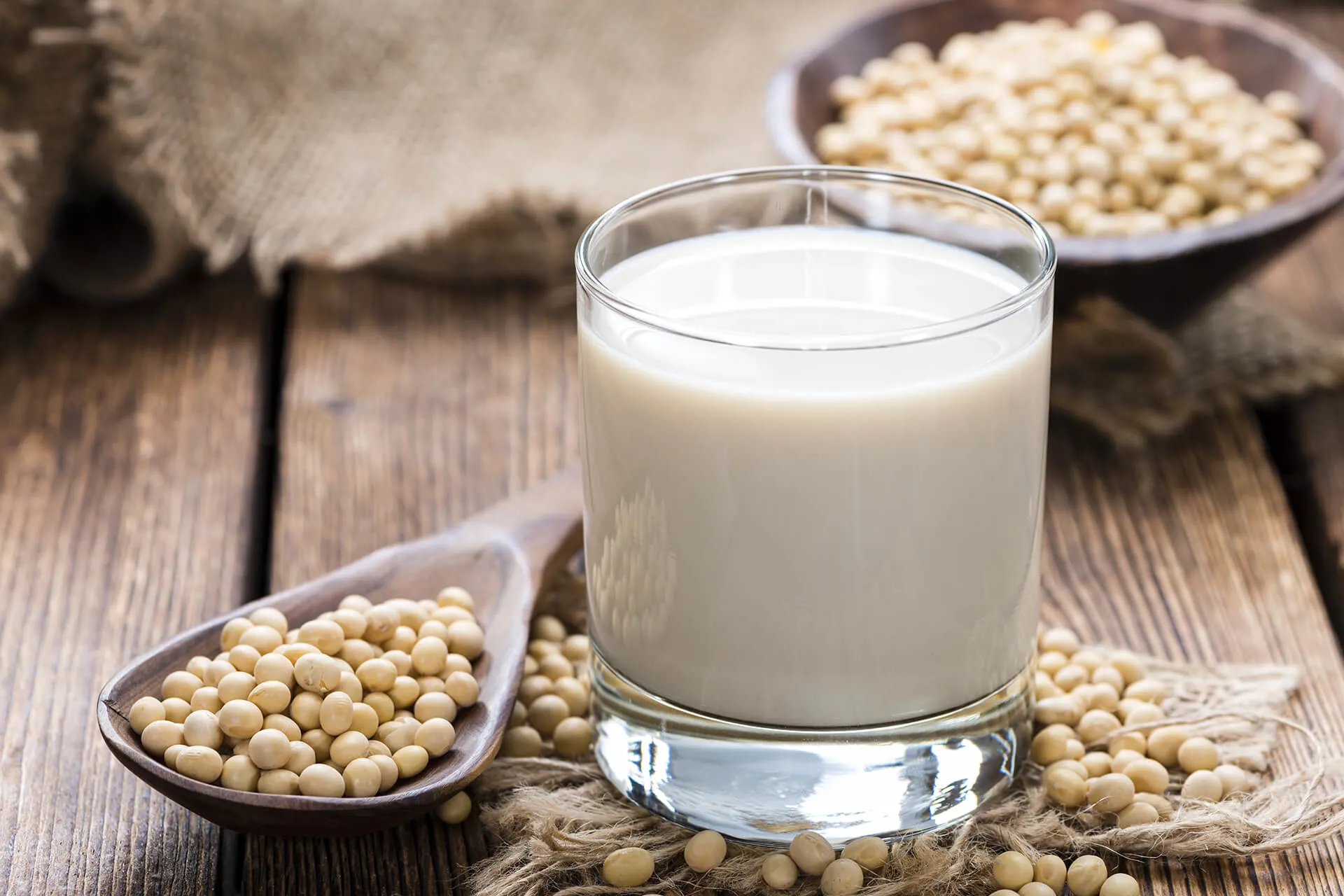
TECHNICAL ARTICLE
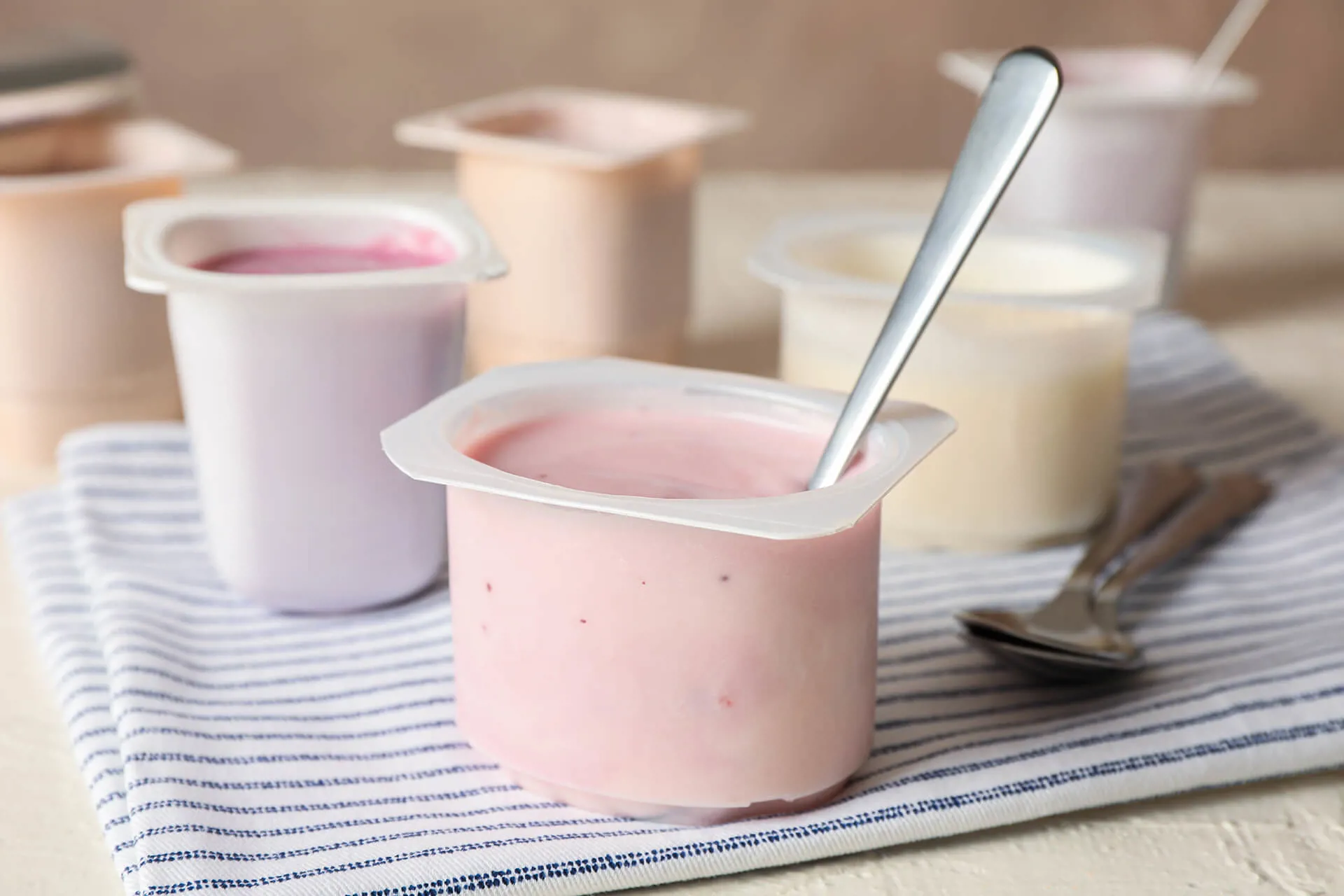
TECHNICAL ARTICLE
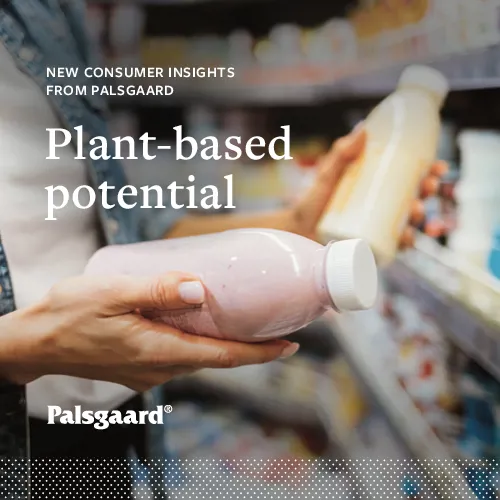
CONSUMER SURVEY